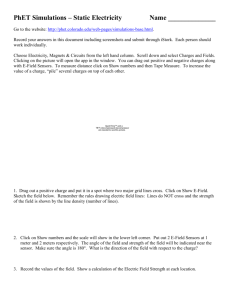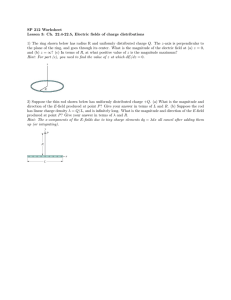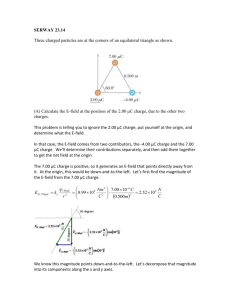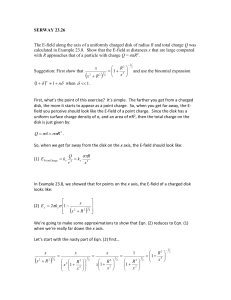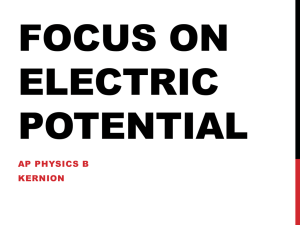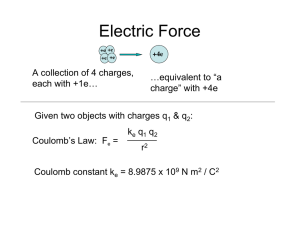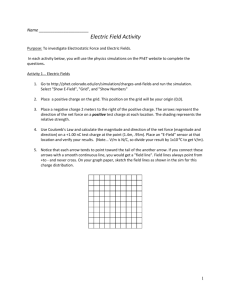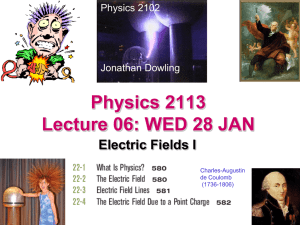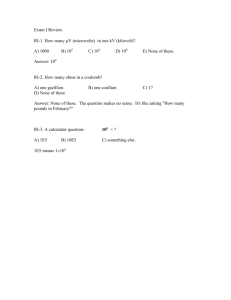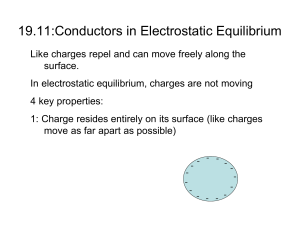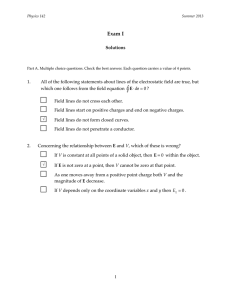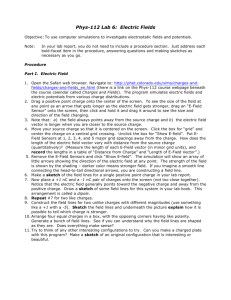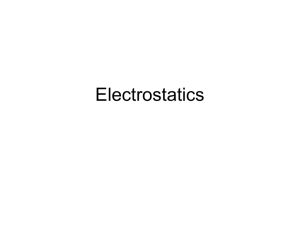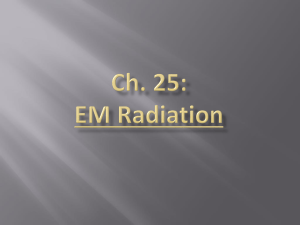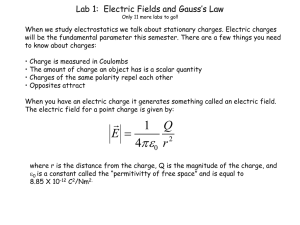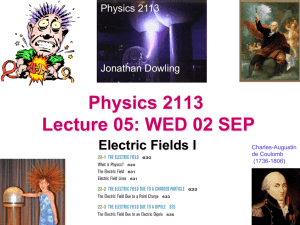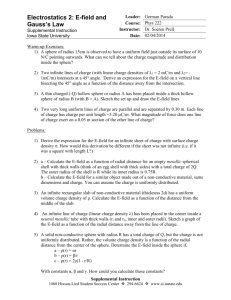23.20
advertisement
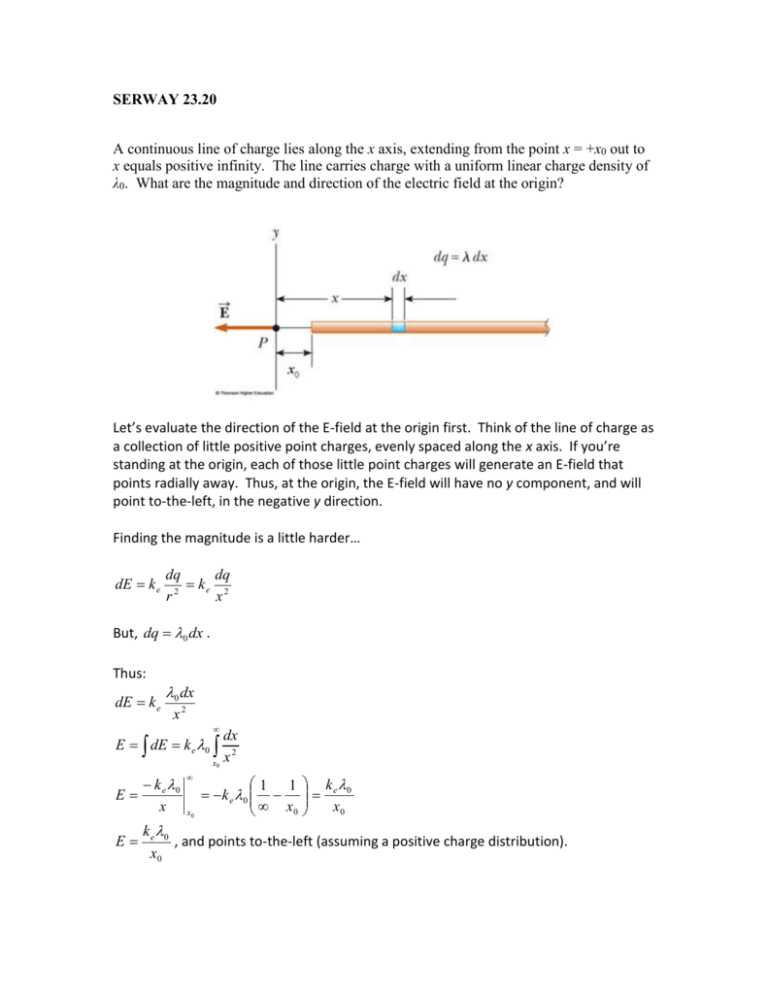
SERWAY 23.20 A continuous line of charge lies along the x axis, extending from the point x = +x0 out to x equals positive infinity. The line carries charge with a uniform linear charge density of λ0. What are the magnitude and direction of the electric field at the origin? Let’s evaluate the direction of the E-field at the origin first. Think of the line of charge as a collection of little positive point charges, evenly spaced along the x axis. If you’re standing at the origin, each of those little point charges will generate an E-field that points radially away. Thus, at the origin, the E-field will have no y component, and will point to-the-left, in the negative y direction. Finding the magnitude is a little harder… dE k e dq dq ke 2 2 r x But, dq 0 dx . Thus: dE k e 0 dx x2 dx 2 x0 x E dE k e 0 k e 0 E x E x0 1 1 k k e 0 e 0 x0 x0 k e 0 , and points to-the-left (assuming a positive charge distribution). x0
